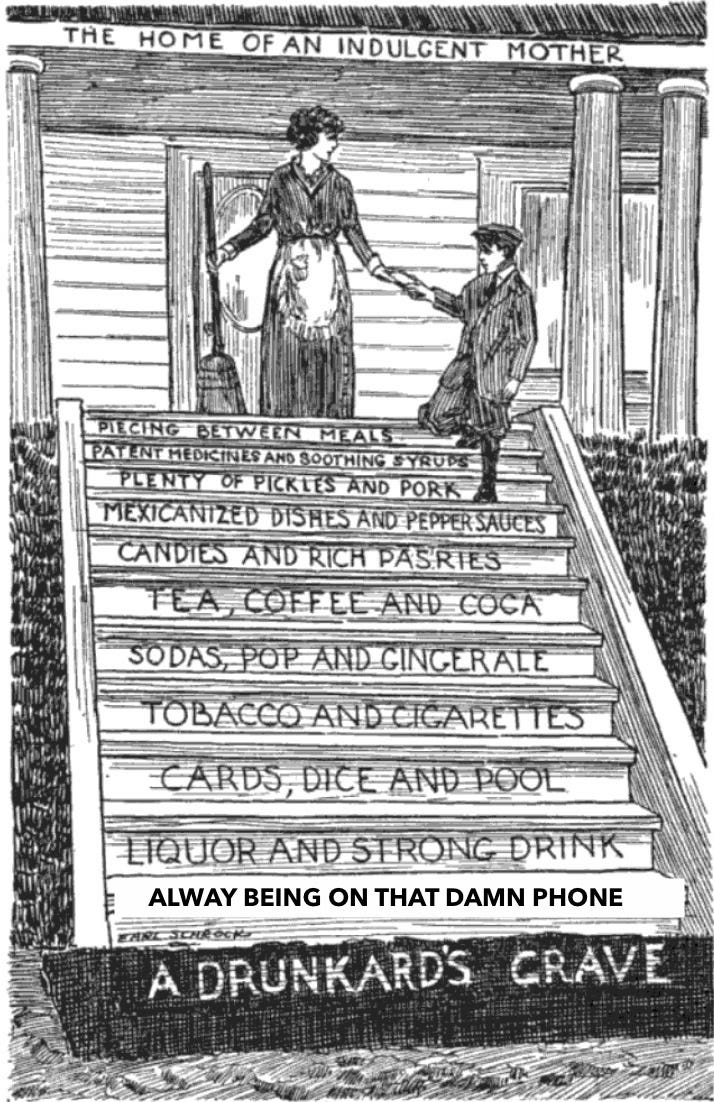Addiction is a tricky word- It can evoke feelings of shame1, absolve one of personal responsibility2, and the over-use of the term can lead to semantic bleaching.3
On the other hand, it’s important that we acknowledge addictive behaviors for what they are in order to create strategies that will help those suffering from the grip of addiction.
While phone addiction isn’t currently classified as a disorder in the DSM-5, it’s becoming increasingly clear that excessive phone/internet use shares many characteristics with recognized behavioral addictions.4
By adapting the framework for determining other addictive behaviors, I’ve created this handy self-assessment so that you can be more conscious of your own relationship with technology, and (if needed) use the results to create an action plan for how to approach your use more intentionally.
NOTE: I am not a medical professional, and the results of this self-assessment are not intended to provide a medical diagnosis or replace professional advice. This tool is designed for personal reflection and awareness of potential behaviors associated with phone overuse.
Impaired Control
Phone addiction manifests as an inability to limite usage despite intending to , often resulting in excessive screen time and compulsive app-checking.
Social Impairment
Excessive phone use can disrupt relationships, reduce in-person interactions, and lead to neglect of important responsibilites or social activities.
Risky Use
Phone addiction can result in dangerous behaviors, such as texting while driving, and persistent use despite negative effects on sleep, health, or safety.
Tolerance and Withdrawal
Phone addiction is marked by a need for increased screen time to achieve satisfaction, and feelings of anxiety or discomfort when the device is inaccessible.
Severity Assessment
Once you’ve completed all the above questions, tally up your total and you have your score!
It’s important to remember that there’s a lot of potential ambiguity in the results here- One person’s often could be another’s rarely; the societal normalization of phone use, the blending of work, entertainment, and communication, and confounding factors like comorbidities (e.g., ADHD, anxiety, depression) all add complexity; also, the intentionally addictive design of devices and apps makes it challenging to assess and address phone use objectively.
I hope this exercise has helped you recognize your current patterns of behavior. If you feel the need to make changes, consider taking the blindpill—reclaim your attention, disconnect from the nefarious grasp of big tech, and rediscover the joy of living intentionally.
Shame being one of the root causes of addiction- so the stigma surrounding such pathologizing can create an shame/compulsive use feedback effect
Identification with the label ‘addict’ potentially gives the addicted person permission to continue with the addictive behavior because it’s “out of their control”.
This is the case with many pathological/therapeutic terms right now (e.g., gaslight, trauma, OCD, abuse, narcissism, etc.)
e.g., compulsive engagement, loss of control, tolerance, withdrawal, negative impact to relationships/health, escapism, risky use, etc.





Footnotes rock